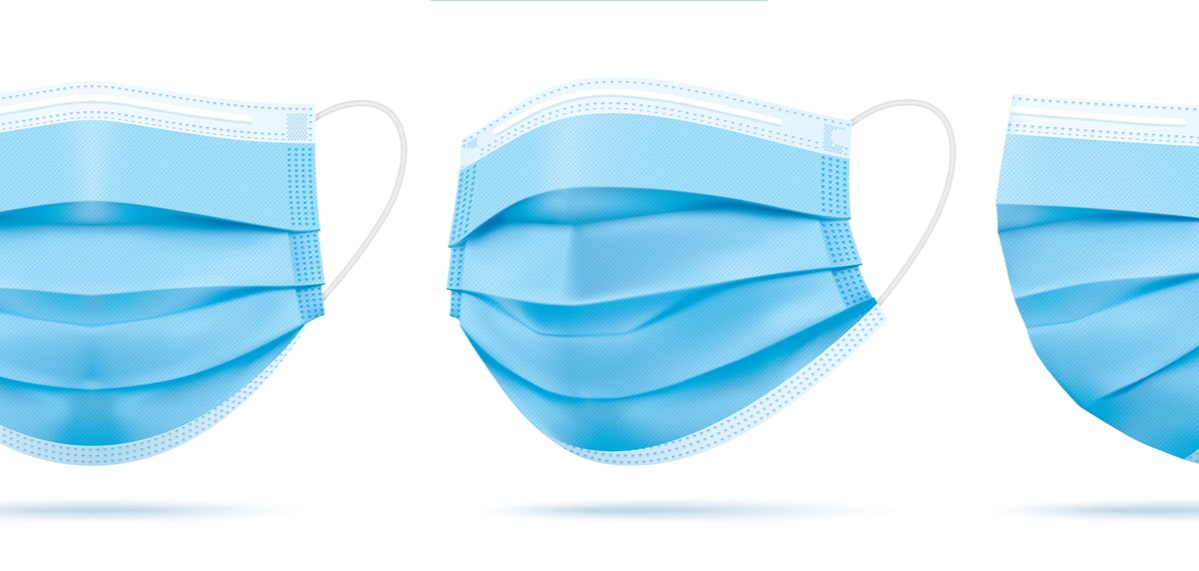“Do patient face masks harbor bacteria that could increase infection rates while receiving intravitreal injections?”
This was the question posed by Dr. Avinash Honasoge and colleagues in their quest to understand and investigate face mask-associated bacteria and ocular infection.
“We aimed to evaluate the hypothesis that an incomplete seal may propel bacteria upward and onto the ocular surface, which was sterilized for intravitreal injections,” said Dr. Honasoge.
The investigators set up a prospective consecutive study including 70 patients’ face masks (35 surgical and 35 cloth) who received intravitreal injections in either one or both eyes at the Retina Institute in St. Louis, Missouri, USA.
“We swabbed the masks separately on the front and back in a sterile fashion, and these swabs were sent for culture of aerobic bacteria and gram staining,” said Dr. Honasoge.
Bugs, Bugs Everywhere
According to Dr. Honasoge, “all masks grew bacteria on both sides, regardless of age (1 day to 8 months). The vast majority of these masks grew normal oral and nasopharyngeal flora. However, a subset of the masks also grew bacteria uncommon to the face, including Rothia and Bacillus species. We correlated time of use to quantity and variety of bacterial species. No patients in our study developed endophthalmitis.”
“Face masks appear to be almost instantaneously seeded with common oral and nasopharyngeal bacteria, regardless of material. It may be prudent to either remove the face mask or seal the nasal bridge before intravitreal injection administration,” concluded Dr. Honasoge.
Tiptoeing Around the Minefield of Acute Retinal Necrosis

Acute retinal necrosis (ARN) is always bad news and in many cases, is characterized by panuveitis and is associated with a high rate of retinal detachment. Given the increased risks of complications with acute retinal necrosis, understanding the host and viral risk factors, as well as treatment paradigms that may avert retinal detachment, are paramount.
At the American Society of Retina Specialists Scientific Meeting (ASRS 2021), Dr. James Bavinger and colleagues from the Emory Eye Center in Atlanta, Georgia, USA, reported a large cohort of patients with acute retinal necrosis. He described their demographics, clinical manifestations and risk factors for retinal detachment.
According to Dr. Bavinger, “a retrospective cohort analysis was performed for all patients diagnosed and treated for ARN at our center from 2010 through 2020. The extent of retinitis was graded by the number of total clock-hours of involvement and zones from posterior (zone I) to peripheral (zone III).”
Retina Detachment, Despite Treatment with Antivirals
Dr. Bavinger continued: “Fifty-four eyes were reviewed, of which 45% were from female patients. The viral cause was VZV (varicella-zoster virus) in 50% and HSV (herpes simplex virus) in 50%. Subjects with VZV-ARN were on average older (56-years-old) and more likely to be male, compared to subjects with HSV-ARN (37-years-old).”
He added: “The visual acuity (VA) at presentation was similar between eyes with HSV- and VZV-ARN.
“In this large cohort of PCR-confirmed ARN patients, we found that worse presenting VA and greater extent of retinitis was associated with retinal detachment development. Our data also showed that despite ARN treatment with systemic and intravitreal antivirals, 63% of subjects experienced retinal detachment, largely within one year of disease onset,” concluded Dr. Bavinger.
Editor’s Note: The 39th American Society of Retina Specialists Scientific Meeting (ASRS 2021) took place virtually and in-person in San Antonio, Texas, USA, from Oct. 8-12. Reporting for this story took place during ASRS 2021.



